
Journal of Optics
Scope & Guideline
Empowering Discoveries in the World of Light
Introduction
Aims and Scopes
- Optical Communication Systems:
Research in this area includes the design, optimization, and analysis of optical communication systems, focusing on enhancing data transmission capabilities, addressing challenges posed by atmospheric turbulence, and developing novel modulation techniques. - Metamaterials and Nanophotonics:
This scope encompasses the study and application of metamaterials, including their unique optical properties, design, and potential uses in sensing, imaging, and communication technologies. - Quantum Optics and Photonics:
The journal features research on quantum states of light, quantum entanglement, and their applications in quantum information processing and secure communication. - Biosensors and Biomedical Applications:
A significant focus is on developing optical sensors for biomedical applications, including early disease detection and monitoring via techniques like photonic crystal fibers and surface plasmon resonance. - Nonlinear Optics and Ultrafast Phenomena:
The journal publishes studies on nonlinear optical effects, ultrafast laser techniques, and their applications in imaging and material processing. - Structured Light and Orbital Angular Momentum:
Research on structured light, particularly high-dimensional optical vortices and their applications in communication, imaging, and manipulation of particles, is a prominent theme. - Computational Optics and Imaging Techniques:
This includes advancements in imaging systems, computational techniques for image reconstruction, and the development of novel optical setups for enhanced imaging capabilities.
Trending and Emerging
- Machine Learning and AI in Optics:
There is a growing trend in applying machine learning and artificial intelligence techniques to optical systems, enhancing capabilities in areas such as image processing, data analysis, and system optimization. - Integrated Photonics and Quantum Devices:
Research focusing on integrated photonic circuits and quantum devices is rapidly increasing, driven by advancements in quantum computing and communication technologies. - Advanced Sensing Technologies:
The development of sophisticated sensing technologies, particularly those utilizing optical methods for biomedical, environmental, and industrial applications, is on the rise. - Optical Metasurfaces and Devices:
Research related to optical metasurfaces, which enable unprecedented control over light at subwavelength scales, is becoming increasingly prominent due to their potential in various applications. - Plasmonics and Surface-Enhanced Phenomena:
Studies on plasmonic effects and surface-enhanced phenomena are gaining traction, particularly for applications in sensing and imaging at the nanoscale. - Hybrid Photonic Systems:
The integration of different photonic systems, such as combining optical and electronic components for enhanced functionality, is emerging as a significant research area.
Declining or Waning
- Traditional Optical Materials:
Research related to traditional optical materials and their applications has seen a decline, possibly due to the rise of advanced materials such as metamaterials and nanostructures that offer superior performance. - Classical Holography Techniques:
While holography remains an important field, there appears to be a waning interest in classical holography techniques, as newer digital and computational methods gain traction. - Basic Optical Measurement Techniques:
The focus on fundamental optical measurement techniques, while still relevant, has decreased as researchers gravitate towards more complex, integrated, and application-oriented methodologies. - General Laser Applications:
General studies on laser applications without a specific innovative approach or focus have become less frequent as the field becomes more specialized and targeted. - Non-specialized Theoretical Studies:
The journal is moving away from non-specialized theoretical studies that do not directly contribute to practical applications or technological advancements in optics.
Similar Journals
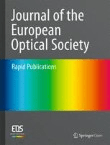
Journal of the European Optical Society-Rapid Publications
Pioneering Quick Communication in Optical SciencesJournal of the European Optical Society-Rapid Publications, with ISSN 1990-2573 and published by EDP Sciences S A, is a premier open access journal dedicated to advancing the field of optics and photonics since its inception in 2006. Based in France, this journal serves as a vibrant platform for researchers, professionals, and students to disseminate their findings quickly and efficiently. Achieving a commendable Q3 ranking in Atomic and Molecular Physics and Optics (2023), it reflects a growing impact within the scientific community, despite currently holding a 33rd percentile rank among similar publications in the realm of Physics and Astronomy. The journal fosters an environment of rapid communication and collaboration, making it an invaluable resource for those interested in the latest developments and innovations in optical sciences. With open access ensuring broad visibility for all published work, the Journal of the European Optical Society-Rapid Publications is positioned as a key contributor to enhancing the understanding and application of optical technologies.

Optics Continuum
Advancing Knowledge in Optics and PhotonicsOptics Continuum, published by Optica Publishing Group, is a pioneering open access journal dedicated to advancing the field of optics and photonics. Since its inception in 2022, this journal seeks to provide a vital platform for the dissemination of groundbreaking research and innovative developments across several interconnected domains, including electrical and electronic engineering, atomic and molecular physics, and material sciences focused on electronic, optical, and magnetic materials. With impressive rankings in Scopus—placed #384 in Electrical and Electronic Engineering and #109 in Atomic and Molecular Physics—the journal aims to engage a diverse readership comprised of researchers, professionals, and students, promoting collaboration and knowledge exchange. The journal's open access model ensures that cutting-edge research is readily available to all, nurturing an inclusive academic environment. For those interested in staying at the forefront of optics research, Optics Continuum is an essential resource that continuously enriches the global scientific community.
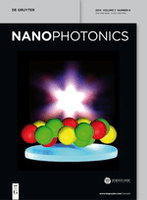
Nanophotonics
Advancing Innovations in Nanoscale OpticsNanophotonics, published by WALTER DE GRUYTER GMBH, is a premier open access journal dedicated to advancing the field of nanophotonics, encompassing cutting-edge research in atomic and molecular physics, optics, biotechnology, and electronic engineering. With a significant impact factor and a notable presence in the top quartile rankings (Q1) across multiple categories, including electrical and electronic engineering, this journal serves as a critical resource for researchers and professionals aiming to explore the latest developments in the manipulation of light at the nanoscale. Since its inception in 2012, Nanophotonics has been an influential platform for disseminating innovative ideas and breakthroughs, offering unrestricted access to its content, thus fostering a collaborative environment conducive to scientific discovery. Located in Berlin, Germany, and with a commitment to promoting the highest standard of scholarly excellence, Nanophotonics continues to shape the future of optical materials and technology, inviting contributions from both established experts and emerging scholars.

ACTA OPTICA SINICA
Unveiling the Science of Light and MaterialsACTA OPTICA SINICA is a distinguished journal dedicated to the field of optics and photonics, published by the Chinese Laser Press. With an ISSN of 0253-2239, this journal has been an essential resource since its inception, covering significant discoveries and advancements in atomic and molecular physics, electronic materials, and optical sciences. The journal is indexed in Scopus, achieving respectable ranks as Q3 in both Atomic and Molecular Physics, and Optics and Electronic, Optical and Magnetic Materials, reflecting its engagement with current research trends. Although it is not an open-access journal, ACTA OPTICA SINICA is hosted from Shanghai, China, and continues to serve as a vital platform for researchers, professionals, and students alike to disseminate and access high-quality peer-reviewed articles, ensuring its prominent place in the academic discourse related to optics and material sciences.

PhotoniX
Catalyzing Progress in the World of LightPhotoniX is a premier open-access journal published by SPRINGERNATURE in Germany, dedicated to the fields of Atomic and Molecular Physics, Optics, and Electrical and Electronic Engineering. Launched in 2020, this journal has swiftly established itself as a key resource within the scientific community, achieving impressive rankings, notably being placed in the Q1 quartile across its categories in 2023. With its Scopus ranks highlighting its excellence—2nd in Engineering (Miscellaneous), 9th in Electrical and Electronic Engineering, and 6th in Atomic and Molecular Physics—PhotoniX serves as a critical platform for researchers to disseminate their findings. With an emphasis on broadening access to cutting-edge research, the journal offers a valuable opportunity for engagement with contemporary advancements in the fields it covers. Researchers, professionals, and students can benefit significantly from its contents, contributing to the collective knowledge in these vital areas of science and technology.
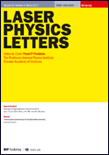
LASER PHYSICS LETTERS
Illuminating the Future of Laser ScienceLASER PHYSICS LETTERS is a prestigious peer-reviewed journal published by IOP Publishing Ltd in the United Kingdom, focusing on the burgeoning field of laser physics and its applications. With an ISSN of 1612-2011 and an E-ISSN of 1612-202X, this journal stands at the intersection of innovative research and practical applications, addressing diverse topics within the realms of Instrumentation and Physics and Astronomy. Recognized for its impactful contributions, it boasts a ranking within the Q3 quartile for both relevant categories as of 2023, reflecting its steady rise and commitment to advancing knowledge in the area. Researchers and practitioners are encouraged to explore its content and contribute to the ongoing discourse that shapes the future of laser technologies. While LASER PHYSICS LETTERS does not currently offer open access options, its rigorous selection criteria ensure that published work is of the highest quality, positioning it as a vital resource for anyone engaged in laser science and engineering.
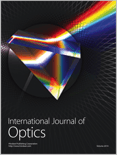
International Journal of Optics
Transforming Perspectives Through Optical ResearchWelcome to the International Journal of Optics, a distinguished publication dedicated to advancing the field of optics and its interdisciplinary applications. Published by HINDAWI LTD, this open-access journal has been pivotal in fostering knowledge since its inception in 2009. With a robust focus on atomic and molecular physics as well as electronic, optical, and magnetic materials, the journal has carved its niche within Q3 quartile rankings in these categories for 2023, signifying its growing impact and relevance in the scientific community. Researchers and professionals will find a rich repository of innovative and cutting-edge research articles that not only address fundamental aspects of optics but also explore practical applications across various domains. The journal's aim is to promote high-quality research dissemination, enhancing collaboration among scientists and ensuring that pivotal findings reach a global audience. Join us in exploring the dynamic world of optics—where your contributions help shape the future of science.

OPTICAL AND QUANTUM ELECTRONICS
Advancing the Frontiers of Light and MatterOPTICAL AND QUANTUM ELECTRONICS, published by SPRINGER, is a premier journal dedicated to advancing the fields of atomic and molecular physics, optics, and electronic engineering. With an ISSN of 0306-8919 and an E-ISSN of 1572-817X, this journal has established itself as a vital resource for researchers, professionals, and students alike, contributing to the discourse from its inception in 1969 to its continued publications through 2024. It holds impressive rankings in Scopus, placing within the top percentiles for its categories, specifically in the 64th for Electrical and Electronic Engineering and 63rd for Atomic and Molecular Physics. Though it does not currently offer open access options, the journal's robust impact factor reflects its importance within its field, making it an essential reference point for cutting-edge research and developments in materials science and optics. Through its rigorous peer-review process, OPTICAL AND QUANTUM ELECTRONICS remains committed to publishing high-quality, influential studies that push the boundaries of innovation and understanding in these dynamic areas of science.
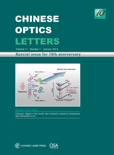
Chinese Optics Letters
Catalyzing collaboration in optical science.Chinese Optics Letters is a prestigious academic journal published by Chinese Laser Press, dedicated to advancing the fields of atomic and molecular physics, optics, as well as electrical and electronic engineering. Since its inception in 2003, this journal has become a significant platform for researchers and professionals to disseminate innovative findings and foster collaboration within these rapidly evolving disciplines. With a commendable Q2 ranking in leading categories including Atomic and Molecular Physics and Electronic, Optical and Magnetic Materials, it ranks favorably within the Scopus database, with notable positions in both engineering and materials science sectors. The journal is headquartered in Shanghai, China, and while additional open access options are not specified, it remains a vital resource for those committed to pushing the frontiers of optical research and applications. As we approach 2024, Chinese Optics Letters continues to play an essential role in shaping scholarly discourse and technological advancement in optics.

APPLIED OPTICS
Unveiling the Science of Light and Its ApplicationsApplied Optics, published by Optica Publishing Group, is a prestigious journal dedicated to the field of optics and photonics. With an ISSN of 1559-128X and an E-ISSN of 2155-3165, this journal serves as a critical platform for researchers, professionals, and students eager to disseminate innovative findings and advancements in applied optics. Established in 1962, it has maintained a significant presence in the academic community, currently holding a Q2 category ranking in various disciplines including Atomic and Molecular Physics, Electrical and Electronic Engineering, and Miscellaneous Engineering as per the 2023 metrics. The journal's reputation is underscored by its solid Scopus rankings, attesting to its influential research output. While not an open-access journal, it continues to offer vital insights and discussions on the latest research topics that are critical to the advancement of technologies in optics, ensuring accessibility to vital knowledge for those within the field.